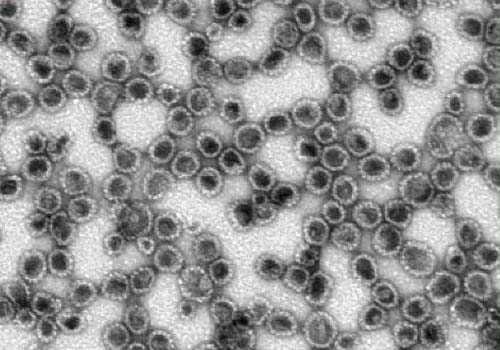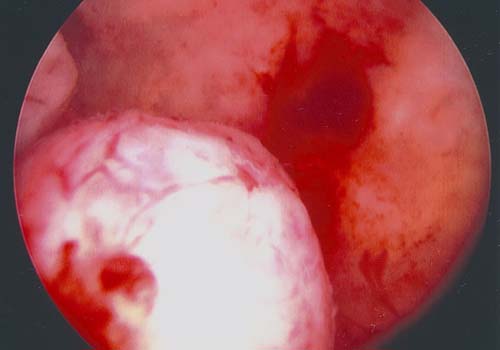-
What about the cervical cancer vaccine?
There is a also HPV vaccine available now. Of more than 100 HPV types, about 15 are found to be high risk. HPV types 16 and 18 are responsible for 82%of cervical cancers in India. The World Health Organization recommends the vaccine for all girls between 9 and 13 years, because the vaccine is highly immunogenic at this age. Only two doses of the vaccine administered at a 6 to 12 month interval are enough to protect girls under 15 years of age. Girls/women 15 years of age and older, as well as those who are immuno-compromised, e.g., living with HIV, require 3 doses.
It is expected to prevent up to 70% of cervical cancers, because they are due to HPV types against which the vaccine is directed. -

What is cervical cancer?
Cervical cancer is a disease caused by the abnormal growth and division of cells that make up the cervix (the portion of the uterus attached to the top of the vagina). Ninety percent of the cervical cancers arise from the flattened or squamous cells covering the cervix. Most of the remaining 10% arise from the glandular, mucous-secreting cells of the cervical canal leading into the uterus.
-

What are the causes?
The development of cervical cancer is gradual and begins as a pre-cancerous condition called dysplasia. In this form it is 100% treatable, usually without the need for a hysterectomy (surgical removal of the uterus). Dysplasia, depending on its severity, can resolve without treatment, particularly in young women. However, it often progresses to actual cancer called ‘carcinoma in situ’ (CIS) if it has not spread, or ‘microinvasive’ if it has spread only a few millimeters into the surrounding tissue but not into the lymph channels or blood vessels.
The risk factors for cervical cancer are:- Infection with the virus that causes genital warts (human papilloma virus or HPV) may increase the risk of developing dysplasia and subsequent cancer. Fortunately, not all women who have had HPV infection or genital warts develop cervical cancer. Other factors, such as smoking, may increase the risk of developing cervical cancer in those who have had HPV
- Early age at first sexual intercourse
- Multiple sexual partners or partners who have multiple partners
- There is a small increased risk of abnormal Pap smears among women who take birth control pills. It is because such women are more sexually active, are less likely to use condoms, and have more frequent Pap smears in order to be prescribed the birth control pill
- Women whose immune systems are weakened - such as those with HIV infection or women who have received organ transplants and are taking drugs to suppress the immune system - may be at a higher risk
- Infections with genital herpes or chronic chlamydia infections, both sexually transmitted diseases, may increase risk
- Infection with the virus that causes genital warts (human papilloma virus or HPV) may increase the risk of developing dysplasia and subsequent cancer. Fortunately, not all women who have had HPV infection or genital warts develop cervical cancer. Other factors, such as smoking, may increase the risk of developing cervical cancer in those who have had HPV
-

What are the symptoms?
Most often, cervical cancer in its earliest and most treatable stages does not cause any symptoms. When there are symptoms, the most common are:
- Persistent vaginal discharge, which may be pale, watery, pink, brown, blood streaked, or dark and foul-smelling
- Abnormal vaginal bleeding, especially between menstrual periods, after intercourse or douching, and after menopause, which gradually becomes heavier and longer
- Loss of appetite, weight loss, fatigue
- Pelvic, back, or leg pain
- Leaking of urine or faeces from the vagina
- Bone fracture
- Persistent vaginal discharge, which may be pale, watery, pink, brown, blood streaked, or dark and foul-smelling
-

How is the diagnosis made?
Invasive cervical cancer often appears as an irregular fleshy growth, often firm or hard, that tends to bleed easily. But even on pelvic examination by a doctor, pre-cancers and even early cancers of the cervix are often not visible to the naked eye. Special tests are necessary to diagnose cervical pre-cancers and cancers:
- Pap smears screen for cervical pre-cancers and cancers. The Pap smear test consists of cells wiped or brushed off the cervix and placed on a microscope slide. This is usually done at the time of a pelvic examination, though not every pelvic exam includes a Pap smear.
- Colposcopy is an examination of the cervix under magnification in order to locate an abnormality of the cervix
- Biopsy, colposcopy, or sometimes the use of LASER (a loop electrode) or other instrument allows a diagnosis to be made
- When cervical cancer is found, additional tests - such as X-rays, using an instrument to look into the bladder (cystoscopy), and rectum and colon (colonoscopy) - are used to determine how far the cancer has spread and what stage the disease is in
- Pap smears screen for cervical pre-cancers and cancers. The Pap smear test consists of cells wiped or brushed off the cervix and placed on a microscope slide. This is usually done at the time of a pelvic examination, though not every pelvic exam includes a Pap smear.
-

What is the treatment?
Treatment of cervical cancer depends on the type of cancer, the stage, the size and shape of the tumour, the age and general health of the woman, and her desire for future childbearing.
In its earliest stages, the disease is curable by removing or destroying the pre-cancerous or cancerous tissue. This can often be done in various ways without removing the uterus or damaging the cervix so that a woman is still capable of having children.
In other cases, a removal of the uterus (hysterectomy) is performed, with or without removal of the ovaries. In more advanced disease, a radical hysterectomy may be performed which removes the uterus and much of the surrounding tissues, including internal lymph nodes. In the most extreme surgery, called a pelvic exenteration, all of the organs of the pelvis, including the urinary bladder and rectum, are removed.
Radiation or chemotherapy may be used to treat cancer that has spread beyond the pelvis, or has recurred. A variety of chemotherapeutic drugs, or combinations of them, are used. Sometimes radiation and chemotherapy are used before or after surgery. -

What is the prevention?
Precancers are completely curable when followed up properly. To reduce the chances of cervical cancer, girls less than 18 years of age should avoid sexual activity or always use condoms. HPV infection causes genital warts. These may be barely visible or several inches across. If a woman sees warts on her partner's genitals, she should avoid intercourse. To further reduce the risk of cervical cancer, women should limit the number of their sexual partners, avoid sexually promiscuous partners, and discontinue any tobacco use. Condoms may help prevent the transmission of HPV.
Annual pelvic examinations, including a pap smear, should begin when a woman becomes sexually active, or by the age of 20 in a non-sexually active woman. All abnormal findings should be followed up with colposcopy and biopsy.

















